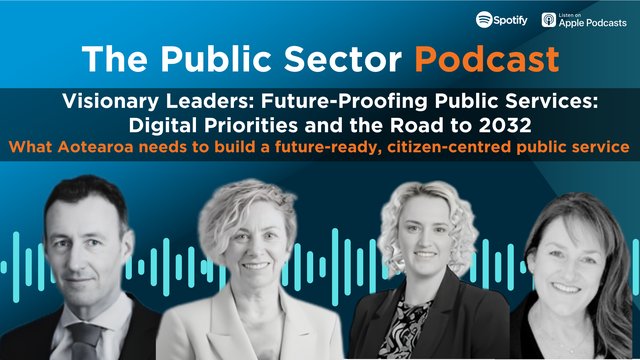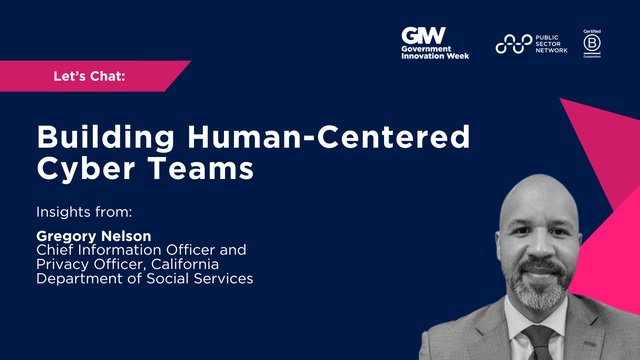Spotlight on a presentation b y Hala Finians, Director, Talent Acquisition, Government of Nova Scotia
Reassessing the Workplace of the Future
The global pandemic has changed the way many businesses and agencies operate, or at the very least it has caused them to re-evaluate their former practices. This is true across the board, including in the area of human resources, from the way organizations recruit and train their staff, to the way they attract and retain them. As a result, many organizations across the world and particularly across Canada are currently reassessing and restructuring their processes. But are they doing it in the right way? Hala Finians , the Director of Talent Acquisition at the Government of Nova Scotia, says that what is known for sure is that there is no going back to the way things were pre-2020. However, it is already clear that despite the mobilizing and agility advances that were so obvious during the height of the pandemic, some public sector agencies are already “falling back on their old practices largely because the public sector isn’t always agile enough. With hybrid and flexible work the way of the future, and with agility so important, “we need to be able to empower our future leaders with all the tools and information that they need in order to respond to all of these changes.
In the forgotten past, people were happy to have a job and often stayed in their roles for many years even if they didn’t really enjoy what they were doing. In the last few decades this started to change and now, especially after the pandemic, the job alone is not enough to sustain employees. It is about the workforce and the workplace as much as the work itself. For instance, the demographics of most workplaces will soon change with the retirement of the baby-boomers and incoming of the next generation who have a different priority as they join the workforce. On top of that, people are looking for their workplaces to represent them, whether that is in the fields of diversity or technology or flexibility. Many workplaces now have staff in different provinces but they aren’t set up for the collaboration opportunities that should come with that. On top of all that, in the public sector, we’re either always short on budget, or short-sighted in the way we implement the budget. This is not an attraction for potential employees.
Thinking About the Leaders of Tomorrow
It is a truism to say that how an organization functions and develops very often revolves around the leaders of that organization. For the most part, the leaders of today, especially in the public sector, are generally highly political, risk averse, focused on their public perception, and a fearful of collective agreements. Once again, this is not inspiring for potential new recruits. And given the last few years, the expectations of workers have changed. For one thing, many employees have seen their leaders in a more intimate atmosphere than before, on the screen with their family members or even their pets. This has created a sense of empathy that may otherwise have been lacking. In a sense, this is now expected and thus the leaders of tomorrow need to be more resilient and more empathetic. On top of that, in a hybrid or remote environment, and with the prospect of greater automation, they also need to be more inspirational and influential to engage their remote workforce.
Overall, leaders and all the employees will need to be much more focused on the outcome, not the process. The public sector should take particular heed of this since we are unfortunately still firm believers in hierarchy and job titles. Part of that is also related to the culture of the organization and often we can’t determine what type of leaders we need to hire or develop until we understand what type of organizations the public sector are. In other words, the culture sometimes has to come first and we should be concerned with intentional culture building and innovative knowledge transfer.
At the same time, that doesn’t mean waiting until there is an improved or satisfactory culture before hiring new people, particularly new leaders. It is true that everyone comes into every role with their own baggage, but they also bring fresh perspectives and new experiences. So the goal should be to hire people with potential – since the higher the skills, the more difficult to recruit – and to develop them internally whilst giving them enough reasons to stay.
A New Way of Thinking
The problem at the moment however is that we do not have the best selection methods. Most recruitment processes in almost every industry are too focused on interviewing, but we can do a lot more than just interview potential employees. From a leadership perspective, quite often we confuse a good performer with a good leader. Instead, it may be time to reassess the selection criteria and to ensure that people are judged not just what they say in a pressured environment, but on who they are as people and what they can bring to a role. There should be a more holistic selection framework and a change to how interviews are conducted. Furthermore, with changing expectations, timelines also need to keep up. Currently most public sector agencies, at least across Canada, are proud of themselves if they complete the recruitment process within 50 days. But in our modern world, people can accept other jobs, especially IT jobs, within just a few days so we should adjust our timelines too.
For most employees, and especially senior leaders, the pandemic has confirmed that the number one thing people look for when applying for jobs is autonomy. They want to be part of the outcome and not just be told what to do. The younger generation in particular also want to make a social contribution. It used to be that after 30 or 40 years of work, people were prepared to take a long vacation and to give something back.
“The current and future generations don’t want to wait for years to do something meaningful. They want to start doing it at or alongside their work.”
Even graduates applying for their first jobs are asking about expanding their experiences and building different kinds of skills. We need to be able to provide them with answers. For the most part, when people are searching around for good employers, they don’t know how government works and don’t understand the relationships between different departments and the different functions of each. If the goal is to recruit and retain good people, then we need to have good career websites that speak the language of the new generation. This includes active participation in social media, which we are not good at. I don’t mean just posting a job and praying. We need to do more than that. There needs to be active participation in the social causes and it means interacting with people. But the problem is that it requires budget and time, and even the recruiters who do interact with social media generally do it on their side of their current jobs. We really need more specialized people who do that kind of work.
Then once people are hired, it is important to start thinking about their retention from day one. We’ll lose them if we don’t show them a career path. That means integrating all the issues that are important to them, including diversity, skills, experience, interesting work programs, good people around them and the autonomy to do their work without constantly checking in on them.
In many ways, the pandemic has shone a light on the issues that were already brewing in the HR space. As the world comes out of the pandemic, now is to time to start dealing with these issues one-at-a time but simultaneously so that we enable future leaders, and so that we enable ourselves to be able to hire, recruit and train the best people.


































